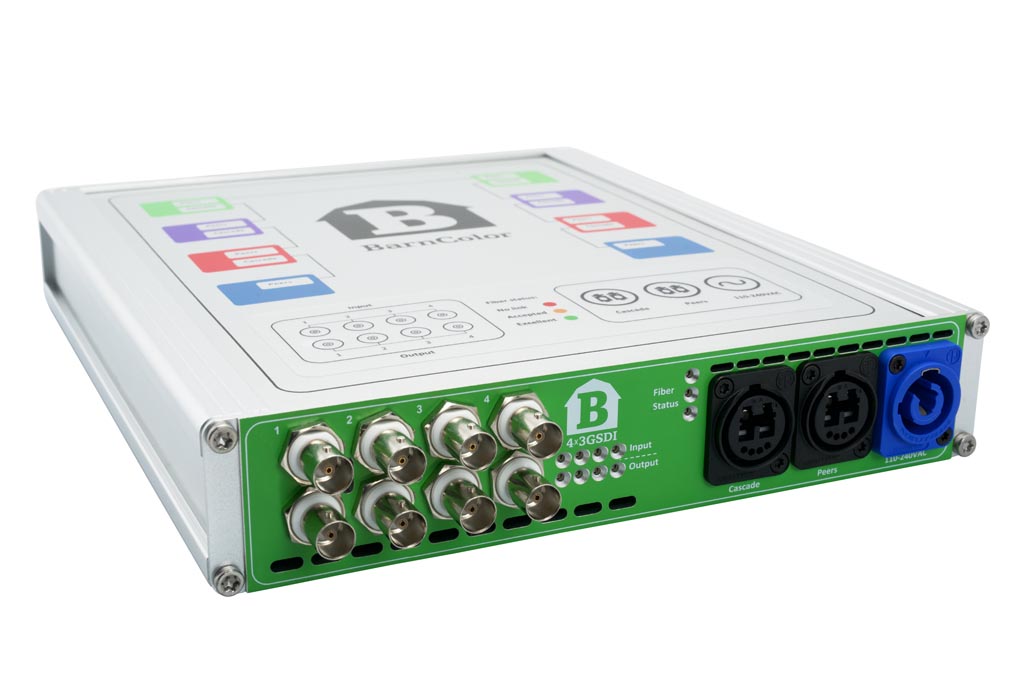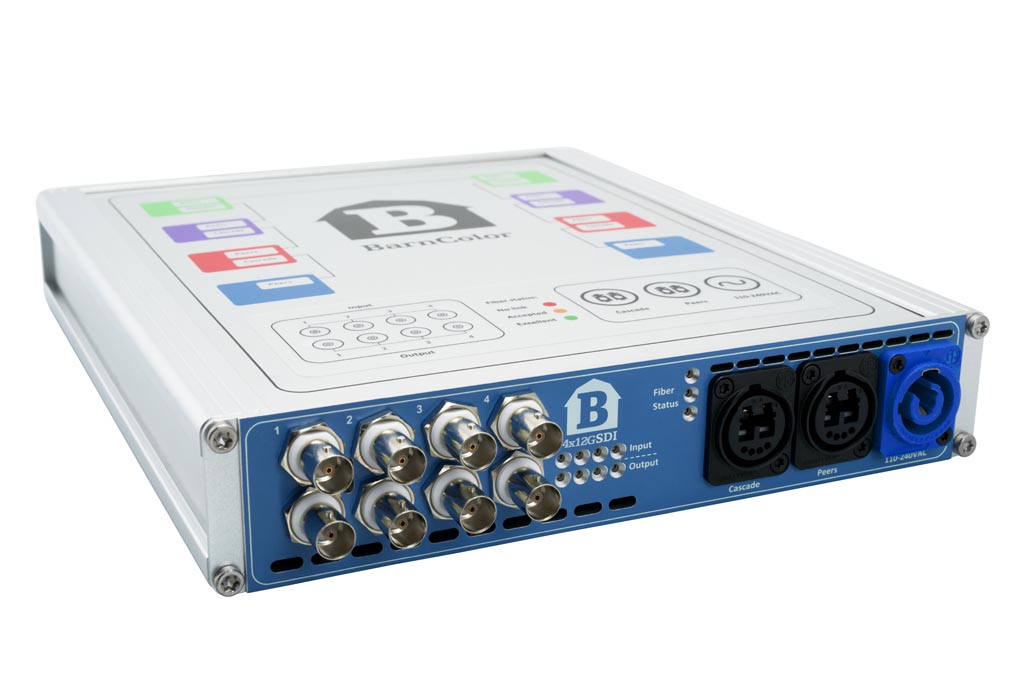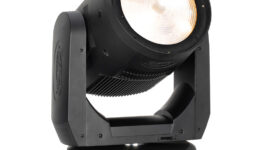ROAD TEST
4 May 2023
Barnfind BarnColor

Subscribe to CX E-News
Melbourne’s Alex Hasker is the Managing Director of Lex Audio Visual. With Alex coming from a background in electronics and live sound, Lex was a PA company prior to 2000. Alex then pivoted the company to be an AV specialist that’s heavily involved in broadcast, and now provides audio visual equipment and crew for hybrid events, broadcast and webcast production, conferences, and more, while also providing pre-production planning and technical consultation.
I discovered the Norwegian brand Barnfind through an associate in the same industry. The BarnColor range were the first robust, self-contained, field-deployable multi-channel HD-SDI video over fibre units that I had seen that require zero config. The equipment we were previously using for this kind of application was very expensive, and required a lot of configuration and specialised knowledge, particularly when dealing with video signals of differing resolutions. In AV applications, people mix and match resolutions all the time, and you usually don’t find out what you’re dealing with until the gig. This isn’t a great situation, and it took a lot of work to deal with. When I saw that BarnColor pretty much eliminated this issue, I picked them up the moment they landed.
Use Case
An average gig for us involves using the BarnColor as a remote stage box for remote cameras running HD-SDI and bringing their signals to the vision mixing position, which could be FoH, BoH or in an OB truck. We could be running PTZs, POV cameras, return feeds, and screen feeds, and we’re typically working on multi camera concert shoots or broadcasts. We use a mixture of Sony broadcast cameras, Panasonic PTZs, and Marshall POV cameras. Our main vision mixing platform is Ross Carbonite. At the moment, we’re using the SDI models of BarnColor, up to 3G, but we do have 4K on the horizon.
You can daisy chain up to four different coloured BarnColors at each end of an interconnecting fibre. You connect different coloured BarnColors with an opticalCON DUO (or regular LC fibres) cascading from one box to another. There are two opticalCON ports on the front of each BarnColor, one labelled ‘Cascade’ and the other labelled ‘Peers’.
Cascade is the port you use to daisy chain the boxes with different colours, and Peers goes to the remote BarnColor(s). This gives us four channels of video each direction. BarnColor is SDI format agonistic, so doesn’t care about video resolution as long as it’s within the limits of the unit, and there are no timing issues or delays. It’s an easy way to deploy a gig.
Colour-Coding
The colour-coded send-receive system that BarnColor uses works using Course Wave Division Multiplexing (CWDM). This means every signal sent down a fibre by a BarnColor is on a different optical wavelength (frequency). By using optical multiplexing, the different wavelengths are combined into one fibre and then separated again at the other end. Typically CWDM supports 16 wavelengths, so each BarnColor utilizes four of these wavelengths. By daisy chaining different coloured BarnColors (each different coloured BarnColor uses a different set of four wavelengths) you can get up to 16 channels of video down a single fibre pair in each directions with no latency.



Layout
Physically speaking, the four BNCs in the top row are inputs, and the lower row are outputs; I’ve labelled them on our units to make the inputs and outputs a bit more obvious. Our camera ops are generally pretty hands-on, and help rig and patch cameras, but don’t necessarily know their way around IP infrastructure. They can see where to plug in, and there’s corresponding status lights for each in and out so that they can see if there is a valid signal present. There’s also a little ‘traffic light’ style indicator for fibre connection status: green light is good, red light is bad! It gives us extra confidence, and anyone can read and rely on it.
Rackmounting
Each BarnColor is a half rack unit and comes with all necessary mounting and linking ears. You can bolt two units together on a single rack tray. Connectivity is by ruggedised powerCON, and fibre connectivity is opticalCON DUO which runs two single mode fibres. That is pretty gig-proof. Single mode fibre has practically no tolerance for contamination, and opticalCON DUO has an integrated flap system that caps over both ends of the fibre to keep them clean.
Service, Support, Suggestions
The service and support from distributor Adimex is very good. Our first BarnColors were very early units, and we had a slight problem with vibration causing modules inside the BarnColor to become partially disconnected. Barnfind were thankfully already aware of this issue, supplied a user quick fix to get us through a busy period, and then serviced them and had them returned in a relatively short time. About the only changes I’d like to see to the product is moving the powerCON and either the Cascade or Peer port to the rear of the unit.
Conclusion
I would absolutely recommend BarnColor for applications like ours. They’re the go-to for robust, simple, and flexible multichannel video over two fibres that can be easily deployed by less-skilled hands. I think it’s the best solution on the market.
Product Info: https://barnfind.no/
Distributor Australia and New Zealand: adimex.com.au
Concept & Specs
The BarnColor range is designed to be a cost-effective solution for sending multiple video signals in both directions on opticalCON DUO fibre cable. All the setup and configurations are integrated and done by the manufacturer, meaning they can be used by anybody, with no special skills. This also means no compression and no latency.
There are three models; 4x3G-SDI, 4x12G-SDI, and 4xEth, which come in four colours each. Four units can be cascaded at each end of the fibre line, in any order, as long as the colour is different. On the other end of the fibre line, units send or receive the signal from their same- coloured counterpart at the other end.
4x3G-SDI
BNC Ports
- SMPTE 259M, 292M, 372M, 424M, DVB-ASI
- Multirate reclocking of outputs 270Mbps – 3Gbps
Fibre port
- Neutrik opticalCON DUO, also compatible with duplex Single Mode fibre LC-LC
- SMPTE 297M
Power plug
- Neutrik powerCON
- 100-240VAC, 15Watt
Dimensions
- 223mm x 277mm x 44mm
- 1.4 kg
4x12G-SDI
BNC Ports
- SMPTE 258M, 292M, 372M, 424M, DVB-ASI, SMPTE ST-2081, ST-2082
- Multirate reclocking of outputs 270Mbps – 12Gbps
Fibre port
- Neutrik opticalCON DUO, also compatible with duplex Single Mode fibre LC-LC
- SMPTE 297M
Power plug
- Neutrik powerCON
- 100-240VAC, 15Watt
Dimensions
- 223mm x 277mm x 44mm
- 1.4 kg
4xEth
RJ45 Ports
- 10Mbit/s – 100Mbit/s – 1000Mbit/s
- PoE 15Watt per port
Fibre port
- Neutrik opticalCON DUO, also compatible with duplex Single Mode fibre LC-LC
Power plug
- Neutrik powerCON
- 100-240VAC, 90Watt
Dimensions
- 223mm x 277mm x 44mm
- 1.4 kg
Subscribe
Published monthly since 1991, our famous AV industry magazine is free for download or pay for print. Subscribers also receive CX News, our free weekly email with the latest industry news and jobs.






